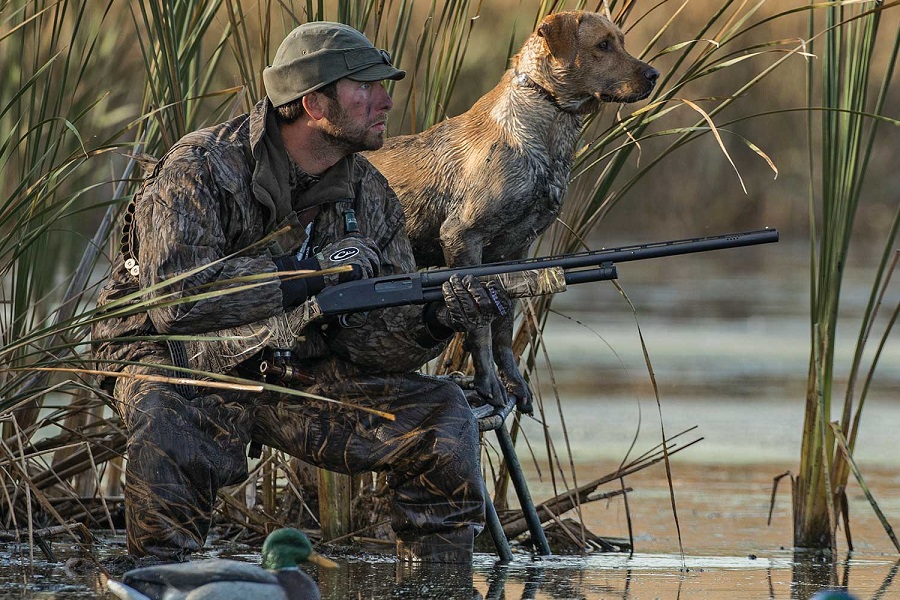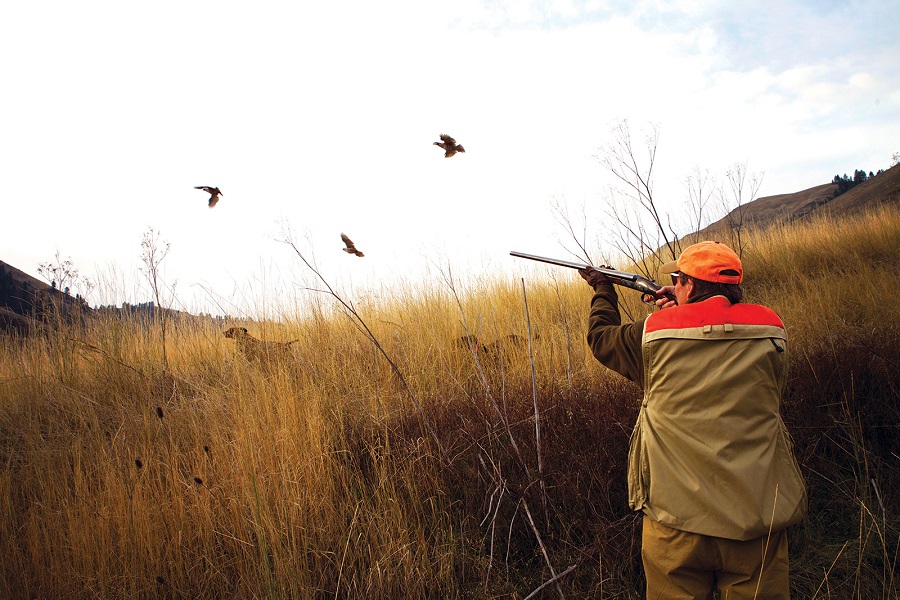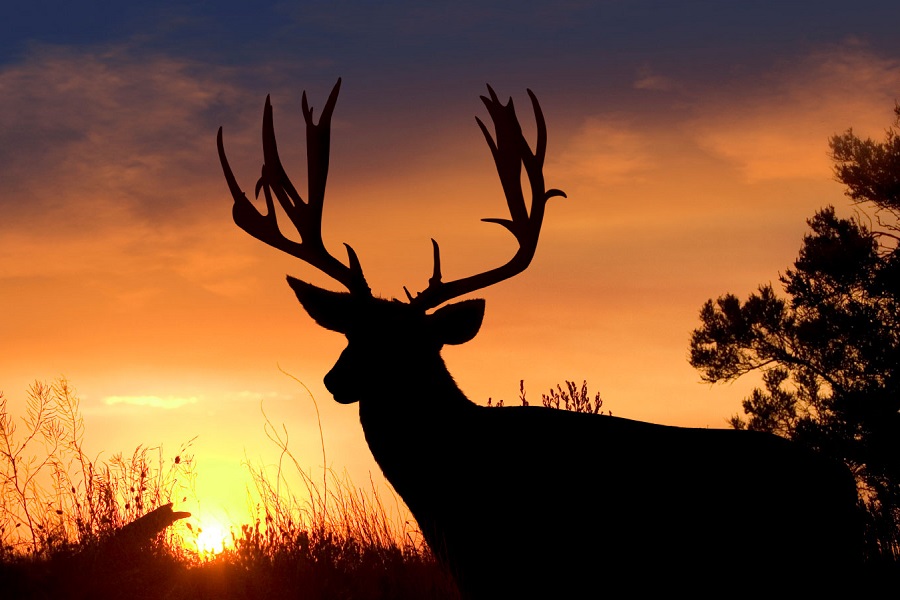With all the technology, know-how, and information available to us right now, you’d think that hunting accidents would be on the decline. Well, not exactly.
Everyone immediately thinks of accidental shootings when they hear about hunters safety, and while that is a valid concern to have, there are less than one hundred fatalities per year related to accidental shootings during hunting, out of about 1,000 reported hunting and firearm incidents per year.
But that’s not the only reason we’re here. There’s a wide blanket of information that you can apply to the hunting safety category, so let’s discuss every single threat and how to avoid them or, at the very least, deal with them head-on so you can mitigate injuries and remain safe while on the prowl.
Four Main Factors In Hunting Accidents
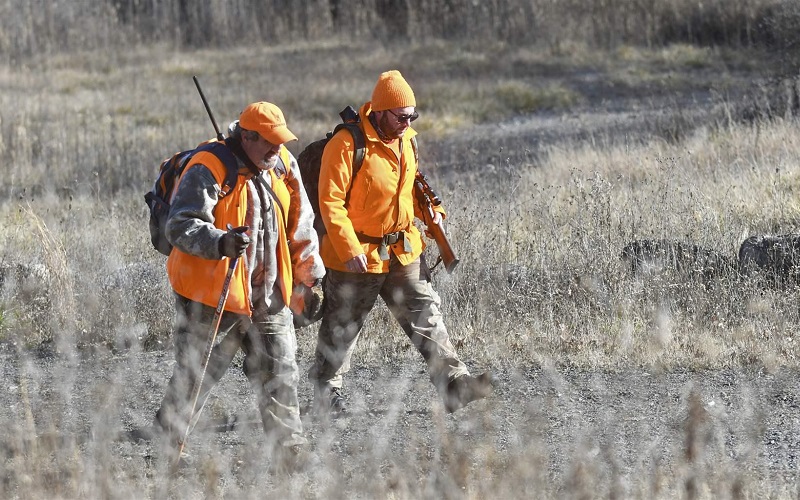
1. Improper Practice
You just don’t know your equipment as well as you think you do. If there are any features, specifications, or attributes that you’ve thought, “That doesn’t apply to what I need it for,” then it’s time to reevaluate. Take a look at every single piece of information surrounding your hunting gear and understand it to its full extent, otherwise you could just make a slip-up due to not knowing your equipment fully.
2. Disregarding Firearm Safety
Don’t pull the trigger—squeeze it. Don’t keep your finger on the trigger—keep it steady outside of the finger hole. These are the basic tenets of firearm ownership and operation, among others, and they need to be followed to a tee. If you’ve only ever used a gun while hunting, try going to a shooting range and relearning what you know about gun handling. You could also read The Ultimate Beginner’s Guide to Guns: A Green Light Shooting Book.
3. Judgement Calls
Calling out games, determining distances, and not properly finding your footing when traversing over rough terrain will all contribute to a lapse in judgment. You’re going to get a rush of adrenaline when you finally come across the prey you’ve been hunting, but don’t let the eagerness put you in harm’s way because you’re trying to close in on the kill. The first thing you need to do, as you’ll hear in any emergency situation prep, is remain calm before you do anything.
4. Equipment Failures
Tree stands aren’t meant to last forever, and your guns can lock up when you’re staring down a mature buck during mating season. Equipment is there for you to rely on, so when it fails, it compromises your entire game plan.
Firearm Safety Rules To Follow When Hunting
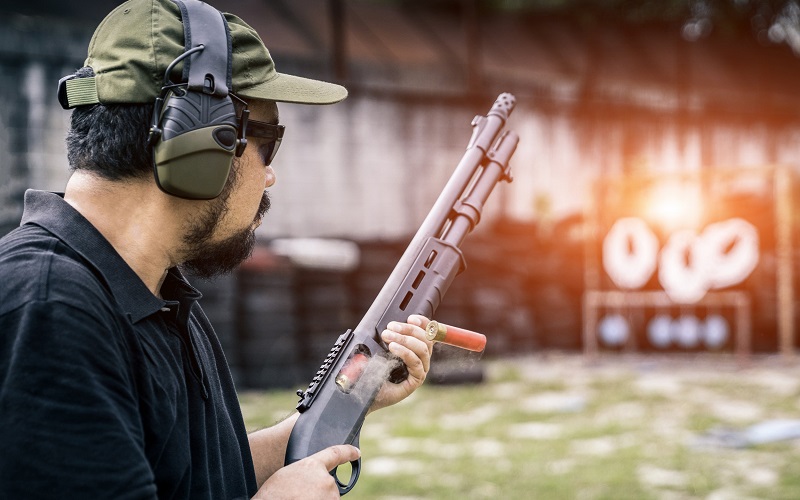
1. Keep It Down
Point the muzzle of your gun towards the ground, no matter what. It’s an extra second of manoeuvring you’ll have to do if you pull your gun up to shoot a target, and that extra second could be the difference between spotting another hunter or making a fatal mistake. Apart from that, it’s good gun owner etiquette to follow this rule, and other hunters in your pack will appreciate this as well.
2. No Trigger Finger
Keep your trigger finger on the outside of the trigger hole. Leave it leaned up against the side of your gun, giving you more reaction time to make a better judgement call and not leaping to a knee-jerk reaction.
3. It’s All Loaded
Treat every single gun, whether it’s yours or not, as if it’s loaded and ready to go off at the drop of a hat. It’s one way to ensure you aren’t on the wrong end of a hunting accident and that you aren’t the one causing it.
4. Depth Perception
You absolutely have to know what’s in front of the target (the space between you and the target) and behind it as well. If you know that your hunting partner is off in that area, somewhere well behind your prey, do not engage for any reason.
All About The Dangers Of Hunting
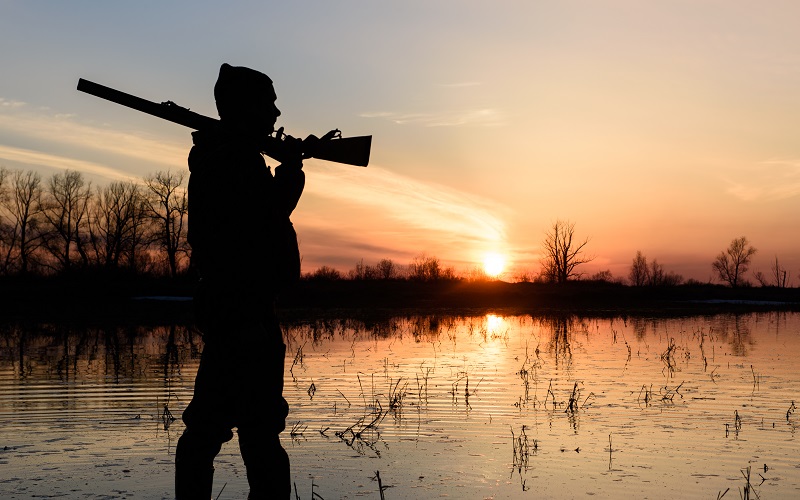
We’ve covered a bit, but there’s more that threatens your safety. These are the main problems with hunters safety that you may or may not encounter, but when you do, you’ll be armed with our knowledge on how to stay out of trouble.
1. Other Hunters
It’s a problem, but it’s even more of a problem on public land. Other hunters are either going it alone or with a pack, and one of them is a spotter. Assume that they don’t know what you’ve learned up to this point in our guide, and you’ll begin to feel a bit of fear creep over you. That’s good; you need to be vigilant, and if you encounter other hunters, it’s important to be distinctly different from everything around you.
Tips To Avoid This Problem
- Exceed IHEA Expectations: The IHEA has certain laws and regulations in place in different hunting states for the amount of hunter orange you need to wear on your clothing. Go a little above and beyond; 500 visible square inches on the top half of your body will work well.
- Tree Stand Hunt: Most hunters are looking for whitetail deer, voyotes, and small game like rabbits—none of which are going to be in the trees. A hunter knows how to look for a tree stand, and if you’re up there, they’re definitely not going to assume you’re prey. If they cross your path, it doesn’t hurt to make yourself known with an “Up here!”.
2. Illegal Hunters
This is another problem entirely. Illegal hunters are the ones that don’t have licencing and don’t have a single clue what safety regulations are, and they’re dangerous. They’re not out to get you, but if they see that you’re a seasoned hunter in full garb, they might be intimidated because they can detect that you know what you’re doing. They’re also less likely to listen to standard procedure, even less than other hunters. At least when you’re dealing with our first problem, they might have some knowledge of what’s going on.
Tips To Avoid This Problem
- Notify local authorities Immediately after this, you’ll turn tail and go back to where you came from. Illegal hunters know they’re doing something wrong, and they’re likely using illegal hunting weapons as well. You can spot them by their misuse of weapons, and after a few minutes, you can usually tell what their ill-gotten hunting practices are.
- Don’t make yourself known: Illegal hunters are poachers and live by a different set of rules. Or rather, lack thereof. You should do your best to remain silent, as if you were hiding from a wild animal and trying not to be detected.
3. Fatigue And Dehydration
This is more common in the spring and summer than in the fall and winter, but it’s a big problem. The average adult male should be drinking a half-gallon of water a day, even if they’re living a sedentary lifestyle. Well, when you’re up and walking around and trotting through miles of hot woods, what do you think is going to happen? You’re going to deplete your hydration supply very, very quickly. That’s also going to add to fatigue.
Tips To Avoid This Problem
- Bring a Lifestraw, or any personal water filtration system, for that matter. You can bring a gravity-fed bag system if you’re making water for yourself and a few hunting buddies, but you need something to filter the water. It can be used for emergencies or just to fill up after you’ve depleted the jugs you brought with you. You could go through anywhere from one to two gallons of water in a single day, per person.
- Get Plenty of Sleep: The night before your hunting trip, getting enough sleep is key. Not only does it ensure your safety on your way to the hunting grounds, but it will also account for better judgement calls and general hunting etiquette overall.
- Don’t Bring Beers: It could be tempting to booze it up while you’re on a trip with the boys, especially if you don’t have time to do this while you’re at home in the nine-to-five grind. Alcohol dehydrates you, and it’s not advised to bring any along on the trip. Not only that, but drinking and hunting don’t mix.
4. Accidental Falls And Physical Injuries
It’s Mother Earth’s terrain, not what we’ve constructed and what we’re used to. There are going to be impurities in the ground, loose spots in the dirt, and climbs that you might not expect when you first start hunting. That being said, you’re at a higher risk of suffering a fall while hunting than most people are in their normal lives. Any accidental physical injury could lead to being stranded (broken bones), or you could get a bacterial infection.
Tips To Avoid This Problem
- Hunt with a Friend: You can only do so much to avoid injury, but if you do incur one, it’s good to have someone to help you out. Whether it’s a cut that you can’t reach to clean and bandage up, or you suffer a major fall and need emergency evacuation, It’s important to have someone you trust by your side.
- Hunt During Daylight: While deer are most active during dusk and dawn, hunting in broad daylight mitigates your chances of slipping or simply not having a good enough view of the area. Visibility is key, and even though you probably have great eyesight, the time of day can compromise that heavily.
5. Predatory Animals
Coyotes, wolves, and even bucks in heat—there’s a lot of danger out there surrounding animals, so it’s important to be prepared for anything. You’re skulking around the forest to find your prey, but you don’t know what’s circling around you, thinking the exact same thing.
Tips to Avoid This Problem
- Bear Spray: This is one of the most commonly purchased types of animal repellents for a reason: it’s also effective against just about everything else. If you encounter a bear that’s trying to attack you, spraying them in the eyes will force them to back off immediately. If you miss, the strong scent might be enough to get them to back down.
- Hunt During Winter: The amount of visibility you have through trees with no leaves is fantastic and helps you avoid wolves and coyotes getting the jump on you. Not only that, but you can spot their tracks to know if there are any in the area if there’s freshly fallen snow.
- Stay put. If you’re in a tree stand, you’re going to have a crossbow or a gun on you. Predatory animals will stalk you until you make a mistake and then take their time to act. If you stay put in an elevated space, even if they try to climb up to you, you’re controlling the high ground. You’ll be able to wait them out, or if it comes down to it, defend yourself and make your escape.
6. Getting Lost
It happens. No matter how experienced you are, it’s a possibility every time you go out on a hunting trip. If you find tracks and end up trailing them to the bedding spot, you might forget how far you’ve travelled and in what direction. Adrenaline from the hunt can do that to you.
Tips To Avoid This Problem
- Have a GPS Watch: You can find plenty of watches with two- and three-day batteries, and even some with one to two weeks. There are also solar-powered watches that can charge while you’re hunting during the day.
- Use STOP: It’s a method that stands for stay calm, think, observe, and plan. That’s basically the creed you need to follow when you’re hunting or camping. Panicking isn’t going to do anything for you. You can control the situation once you control your reaction.
- Stick to Open Areas: In the forest, trees all look the same, and there aren’t enough distinct characteristics about your environment to identify where you are. Instead, find a clearing. This could help you spot nearby mountains, elevated buildings, or even just reduce the sound barrier of the forest so you can hear nearby cars on a motorway.
7. Insects And Insect-Borne Diseases
Common sense tells you that you should put on bug spray if you’re outside, but that stuff at the convenience store isn’t designed to hold up to deep-wood creatures. You need a higher-quality bug spray to deter ticks and mosquitoes and stave off any insect-borne diseases. Thankfully, the number of cases of Zika and West Nile has gone down considerably through the years, but that doesn’t mean we’ve eradicated them from existence. One lapse in judgement could result in an infection.
Tips To Avoid This Problem
- Buy a long-lasting DEET spray: DEET is the leading product in proven insect repellents. It has its health concerns, but it is likely the most effective thing in your arsenal against insects.
- Bring Sage: Sage, for some reason, naturally repels a lot of insects. It’s not proven to repel ticks, so it would be used in addition to an anti-tick insect spray, but it can be a great resource to add to your backpack and equipment to ensure bugs aren’t landing on your stuff.
8. Plant Life Reactions
Ever brushed up against a plant and suddenly got itchy? You might be lucky enough to avoid it with all the layers you’ll have in your camping gear, but you never know what’s going to happen. Learning how to identify poison oak, ivy, wood nettle, and poison sumac is imperative to your survival and self-preservation out in the wilderness.
Tips To Avoid This Problem
- Read up: Before you head out, read a book on poisonous plants, like A Field Guide to Venomous Animals and Poisonous Plants, or local information available at park ranger outposts. Visuals are great for being able to identify what’s possibly waiting for you in the woods.
- Avoid the Unknown: If you aren’t sure, just mark it as a definite no. Foraging and finding a plant you can’t immediately positively identify Then consider it poisonous and move on to the next. It’s never worth the risk.
- Avoid Narrow Paths: Simply brushing up against most of this is going to bring on a reaction, so avoid narrow paths where you could end up covering your clothes in pollen from these plants so your skin doesn’t come into direct contact with them.
Make Your Own Hunting Regulations
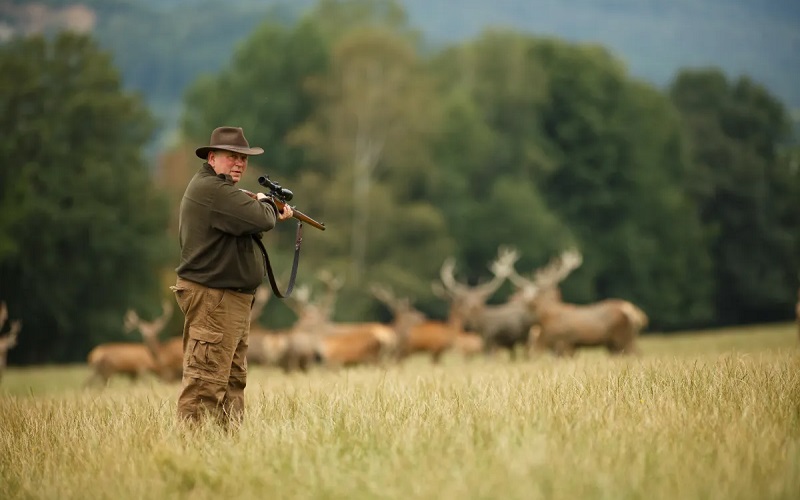
Once you know your safety tips and tricks and what to keep a lookout for, you’ll be able to create your own hunting safety code that keeps every potential threat in check.
It’s important to develop your own hunting safety ritual so that you can habitually check for every possible lapse in safety and teach other hunters how to do the same.
There are over a thousand hunting injuries related to firearms in North America every single year, and numerous non-lethal injuries as well. Stay vigilant, and you’ll stay on top.
Resources:

